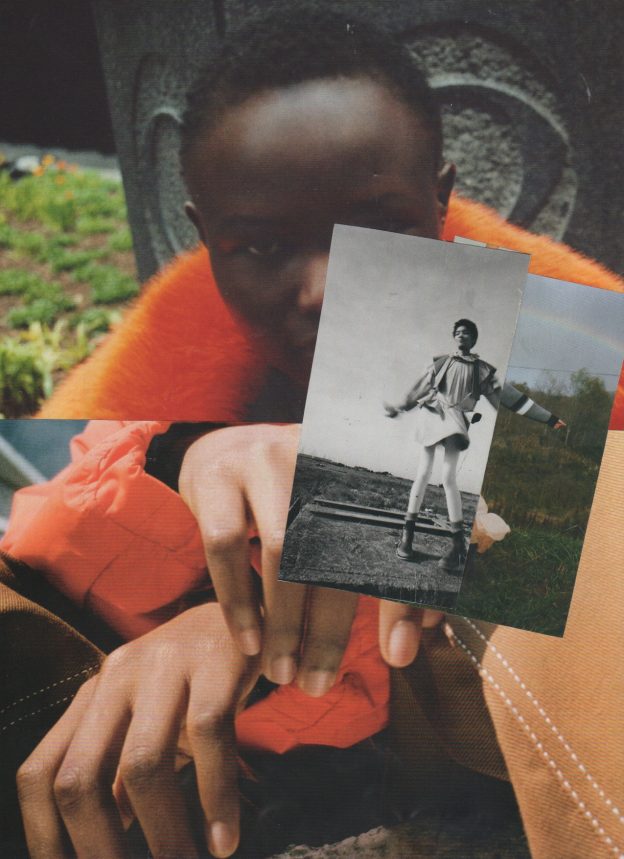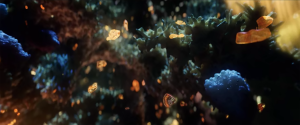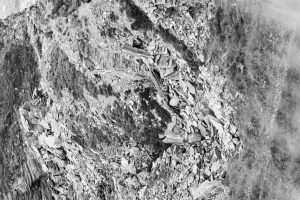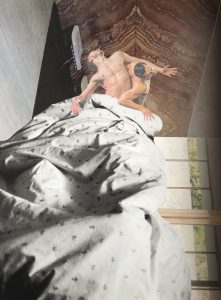CAN A FILM BE THERAPEUTIC?
The first time I watch Black Panther, at the IMAX cinema, I don’t feel great. If feeling good is the definition of therapeutic then, my first answer is no. Courtesy of 3D glasses, my stomach lurches through various chase and fight scenes and the vertiginous land-sky-scapes of Wakanda – the fictional African nation in which the film is partly set. I leave the cinema feeling jittery and out-of-sorts and the husband who is with me seems equally agitated. We up the pace and step our overstimulated, cortisol-fuelled selves around Waterloo station to the bus stop. On the 59 bus, we briefly compare our emotional responses to the film, (joy and sorrow among them), but are too overwhelmed I think, to really nail the source of our mutual dysregulation. We just agree to avoid 3D films from now on.
I usually avoid action movies altogether actually, but Black Panther is more than this. Watching is a visceral, evocative and emotional experience that, for me at least, requires some internal processing so the following week I watch it again, only this time in regular 2D in the hope that I’ll understand more without the sensory overload. It turns out that blaming the third dimension may have been reductionist. In terms of dimensions, the film opened, and offered a glimpse into, several dimensions at once. Some of these I believe, have therapeutic potential and are worthy of more detailed attention.
A FOURTH DIMENSION: VISIBLE BLACK WORLDS
A superhero with an afro; a silver-dreadlocked queen; a Black female army; a braided scientist spearheading the development of a technologically advanced nation. A Black world-making so stunning, and so rarely seen that it throws up a certain level of cognitive dissonance. I, by the way, am a middle-aged Black woman working as a therapist. I consider myself educated, and woke. Perhaps it won’t surprise you then to hear that I believe it is important for the healthy psychological development that a Black child is able to see themselves represented in ways that include beauty, intelligence, agency, and creativity; also, to be able to recognise people who look like them, interacting, collaborating, problem solving, imagining and creating. As therapists, we generally accept that an important factor in psychological development is recognition, which psychoanalyst Jessica Benjamin describes as a “confirming response, which tells us that we have created meaning, had an impact, revealed an intention”. In a poignant moment towards the end of the film, a young boy looks up in awe at T’Challa (Black Panther), who has just arrived on the streets of Oakland California in an impressive piece of air travel technology, and asks who are you? This boy recognises that he is seeing something he has never seen before and his face is a picture of wonder and watching him, mine is too, because for those few seconds, I am him. When I return to my middle-aged reality I find the wonder of things-not-seen-before is tinged with sorrow. Surely, I was once a child who also needed this recognition, and found it lacking? A beautiful moment in a great film thus marks a moment of realisation. The lack of representation with which I have grown – like an unseen parasite – has become a part of me and formed into a particular self-state so familiar that I think of it now, if indeed I think of it at all, as normal. We remain robust and continue to challenge Black underrepresentation in the media (see Ava Du Vernay, Lenny Henry, Idris Elba, Jacob V Joyce) but for a few moments, as Black Panther expands my experience of possible to include what could, would and should have been, I allow my heart to break.
A FIFTH DIMENSION: THICKER NARRATIVE
Like any therapist working with narrative I appreciate that no single story can encapsulate or handle all the contingencies of life. In seeking a bigger picture with more scope for understanding and ‘re-authoring’, therapists work to encourage ‘thicker’ narratives – not a single story, but stories told from different points of view by different ways and means. In my personal life, I am grateful that in response to the thin narratives offered to me in relation to “Africa”, and my own African heritage, I was able to find others that were ‘thicker’ and more layered. Growing up in London through the sixties and seventies, my childhood world was one in which Black people were either absent from screens or characterised as dumb, dependent and savage. Where Black characters did exist, their lives were often short. [If you believe this phenomenon a thing of the past, I give you Godless, the recent Netflix series – spoiler alert: The Black characters are two-dimensional, easily bamboozled, and they all die]. Having survived this toxic environment into adulthood then, as parents to our own five children, we sought to offer alternatives. This was challenging and after a few years of struggle we concluded that nothing short of living on the African continent would do. There followed ten wonderful years in The Gambia, during which our children grew within and became a part of layered narratives of what it could, would and should mean to be a Black, African child. Their worlds were expanded as were our own, to a large extent, but it would be false to claim that this experience obliterated the thinner, racist, narratives – legacies of our own childhoods – that linger within, despite our best attempts to file them away.
A SIXTH DIMENSION: BLACK AGENCY
In an early scene in the film, Nakia – Black Panther’s ex’ – is in Nigeria, having infiltrated who we imagine to be a parallel universe version of boko haram. She, T’Challa and Okoye (general of the elite royal guardians the Dora Milaje) liberate a group of women and girls held at gunpoint in the back of a truck. Nakia shows mercy – stops Okoye from killing one of the gunmen who she explains, is ‘just a boy – also kidnapped’. Okoye turns to the now freed captives and instructs them to ‘speak nothing of this night.’ This clear reference to the real-world problem of girls being kidnapped speaks to me of Black agency – and this representation of Black people ‘saving ourselves’, (as we surely regularly must have been, to still be here), is another rarely seen thing. Granted, Vibranium – the fictional metal that is the source of Black Panther’s superhero suit, and of the super-advanced technology by which our heroes arrive – does take some of the hard work out of the ‘saving’. The image, notwithstanding, is a powerful one.
A SEVENTH DIMENSION: KICK BACK N CHILL
A friend laughs, and wants to know why he finds us Black folk watching Midsomer murders and Miss Marple on TV. Truthfully? Absence is sometimes preferable to misrepresentation. Do you remember Crimewatch angst, waiting for photos of suspected criminals to flash up on screen while silently pleading please let it not be a Black man? If so, I’ll guess that you might be Black. Low representation in a toxic environment means that any black character in film or TV becomes someone to worry about. Those few-and-far-between Black characters, shoehorned into a position where they had little choice but to represent us all, needed not to look, do, or be, bad. Fortunately, because it is rare for Black people to venture to Midsomer or Miss Marple land, in these locations we get to kick back with mugs of tea and relax while white characters roam free being whatever it is that they are, and as rotten, dirty and murderous as they like. Comparing Black Panther to Midsomer Murders is admittedly ridiculous. Still, it was great to be able to watch a film without having to brace myself for extermination, reduction, ridicule, or one-dimensional existence as a vehicle for the plot lines of more nuanced white characters. Kick back ‘n’ Chill; a feeling so unfamiliar that I’m still practicing. Apparently, anticipating stereotypes, bad endings and bad deals has become a way of life.
AN EIGHTH DIMENSION: BLACK BEAUTY
A simple enough point; the characters in Black Panther are gorgeous. Plenty of commentary already exists so if you want to read more check Noel Ransome describing the journey from the childhood message that ‘Your black ass ain’t shit’ to feeling ‘pretty fucking beautiful’ and Danielle Dash on her joy on the shattering of the myth that black women – specifically dark-skinned black women are undesirable. Anecdotally, I give you Anansi – the character I reeled out every year on book days, as a dress up suggestion for my children. My eldest daughter still asks why I dressed her in an African abaya for the school nativity play (she has the photographic evidence) and thought a gele was an appropriate Easter bonnet. What can I say? Sorry girl, Nakia, Okoye and Shuri weren’t around. Can we call it water under the bridge?
A NINTH DIMENSION: UNTOLD STORIES
A ripple of laughter in the cinema when Shuri calls a white CIA agent ‘colonizer’. A nod to the ideas of psychiatrist, philosopher, and writer Franz Fanon, when the villain Killmonger, enraged at Wakanda’s neutral position on international affairs, proposes armed revolt. Various shout outs to the ancestors including those who jumped from slave ships, and, as Killmonger remarks, ‘preferred death to bondage’. Black Panther tells stories rarely shown on the big screen, which in itself is therapeutic in that it is a ‘recognition’. In the film, Wakanda’s governing council grapples with the equivalent of real world dilemmas. Should Black people, for example, be protecting ourselves and our creations (from being hated, killed and appropriated) by staying quiet and hidden? Or is it better to persist with efforts to connect and explain and share in this humanity, even if that leaves us vulnerable and open? Again, no one story can provide an answer but what stories can do is stretch our minds in the direction of possibility – for good or bad. Some of the storytelling in Black Panther attracts critique, rightly and usefully. Khanya Khondlo Mtshali reminds us that watching a film is not an act of resistance and that there is more work to do. Patrick Gathara reflects that the film’s portrayal of Africa is in many ways regressive and neo-colonialist and questions if it really offers anything to Africans on the continent. Living in The Gambia we became all too aware that many of the things that surprised, touched, and excited us sometimes puzzled our friends, neighbours and colleagues. Why were we making such a fuss about a Black doctor or scientist? Why should we feel ashamed of a Black thief when he has clearly done wrong? When stories are missing, as they have been for us, perspective changes. We, who have grown not seeing ourselves, take note of anomalies and celebrate victories, however small. Diverse geographies, histories and experiences mean that we have a range of needs, and that there are many stories in need of telling. The reach of a telling like Black Panther, cannot however, be underestimated.
WAKANDA THERAPY?
Seeing Black Panther again, I do feel better – good even – and I maintain that ‘feeling better’ falls short of defining ‘therapeutic’. The dictionary gives us healing, curative and medicinal but I’m going with a definition from the field of Creative Writing for Therapeutic Purposes (CWTP), because this in an area of specific interest for me. Hunt (2000)[1], discussing the therapeutic dimensions of autobiographical writing, proposes that ‘therapeutic’ denotes beneficial psychological change, the components of which might include inner freedom, greater psychic flexibility, a clearer or stronger sense of personal identity and an increased freedom to engage with other people as well as in creative pursuits. Therefore, whilst we may be tempted to describe a trip to the spa as ‘therapeutic’ because it puts a spring in our step, we might also consider whether it helps us to achieve these specific outcomes. A journey along a therapeutic path I believe, is different. Whether that path be through creative writing, or a relational path, travelled with a therapist, in truth it doesn’t always feel better. Therapeutic paths are neither straight nor smooth; there will be grit along the way. The grit, when we have opportunities to feel and think with it, is often a catalyst for psychological change. Black Panther is neither flawless, nor a panacea for what ails us, but it does open up pathways – with twists and turns and enough grit for therapeutic potential. The opportunities to feel, think and converse that Black Panther has given rise to are worth celebrating. Writer and activist Audre Lorde [2] offered that our feelings are our most genuine paths to knowledge and proposed that examining feelings can lead us to new ways of understanding and ultimately be the beginning of new visions. Black Panther offers a new vision and along with it dimensions that, if we dare to experience and explore them, are gateways to a range of therapeutic possibilities. I hope that this conversation continues. For now, I end with James Baldwin, who in his preface to the 1984 edition of Notes of a Native Son said,
“I am what time, circumstances, history, have made of me certainly, but I am also, much more than that. So are we all.“
Black Panther is a nod to all of this – to the circumstances, and to the history and to the more that we are. Wakanda therapy is this? If we stretch our imagination we may well find out.
[1] Hunt, C. (2000) Therapeutic Dimensions of Autobiography in Creative Writing. London:Jessica Kingsley Publishers
[2] In an interview with Claudia Tate in 1982
Written by FOLUKE TAYLOR
Originally published MARCH 2018 on Foluke Taylor‘s blog
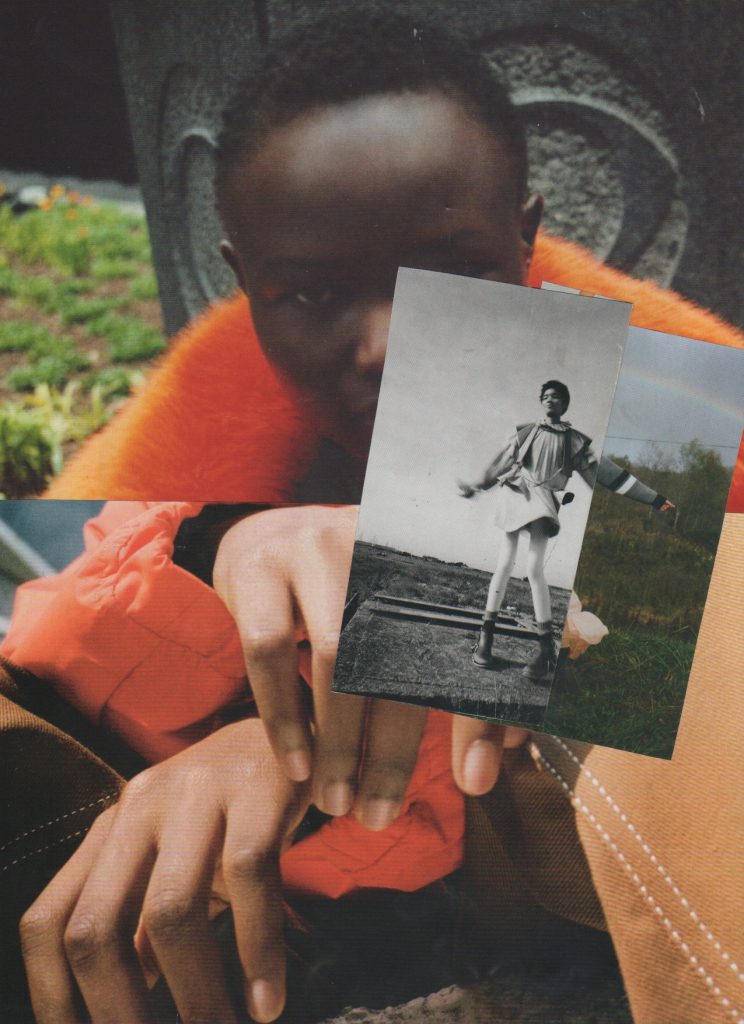
Artwork by KATE HOLFORD
© Copyright for all texts published in Stillpoint Magazine are held by the authors thereof, and for all visual artworks by the visual artists thereof, effective from the year of publication. Stillpoint Magazine holds copyright to all additional images, branding, design and supplementary texts across stillpointmag.org as well as in additional social media profiles, digital platforms and print materials. All rights reserved.
